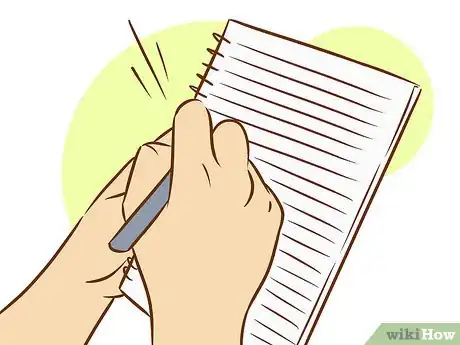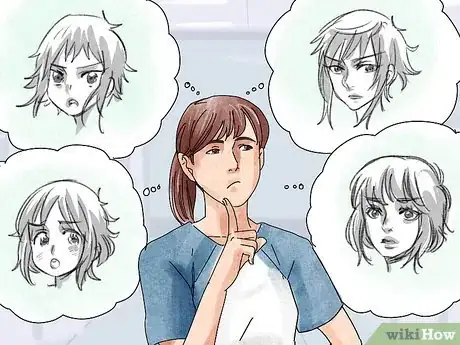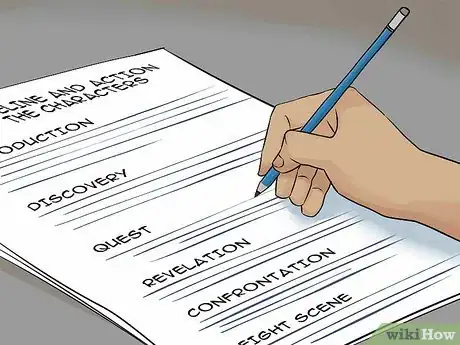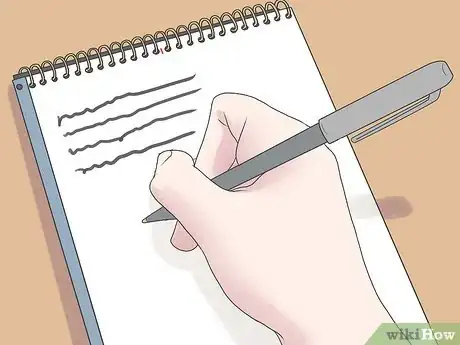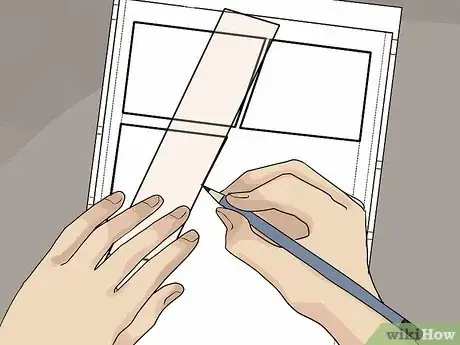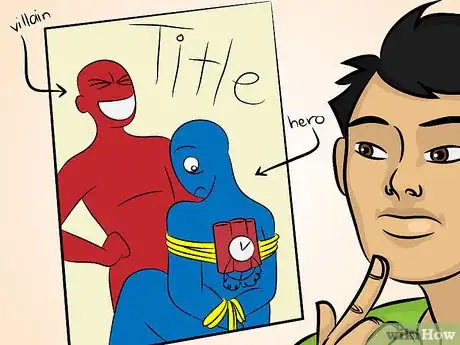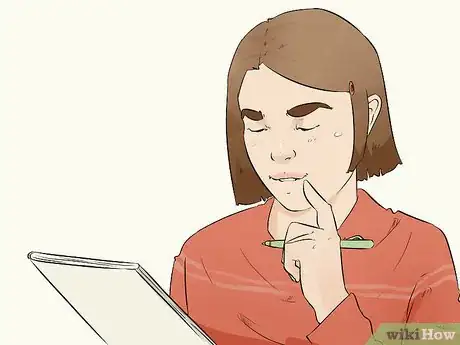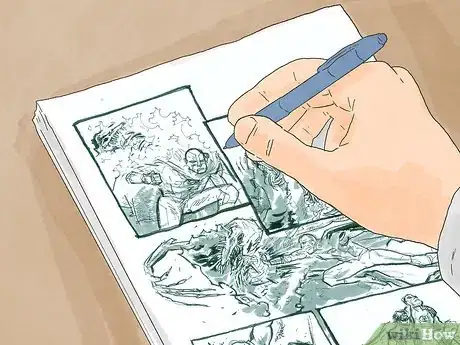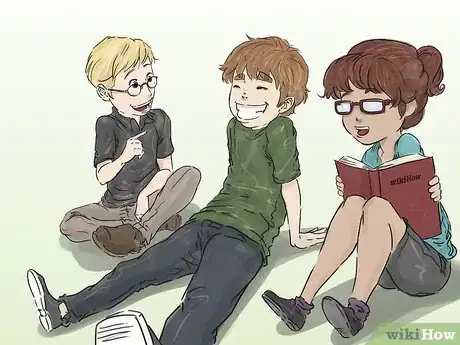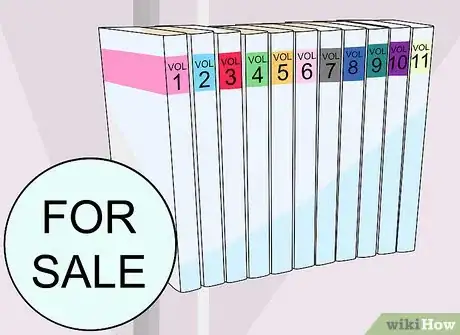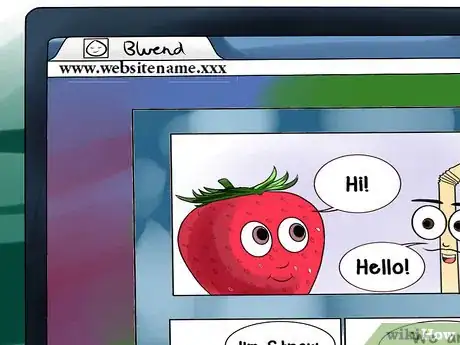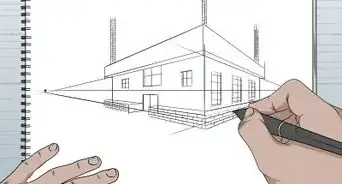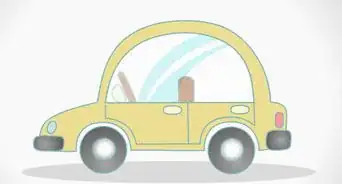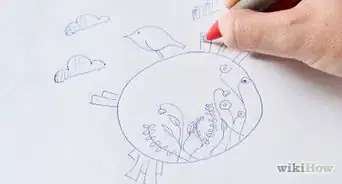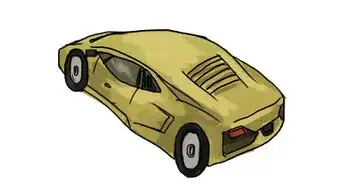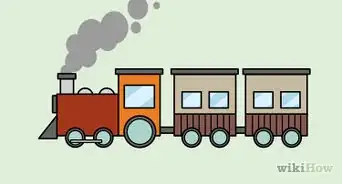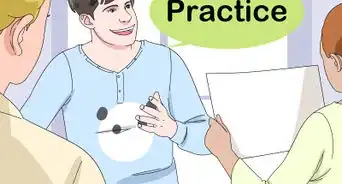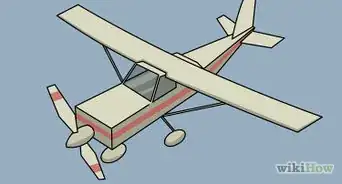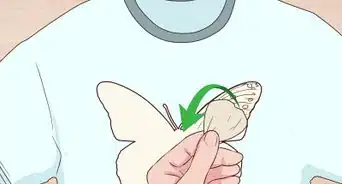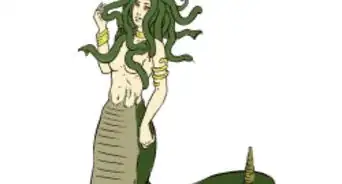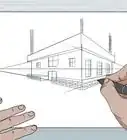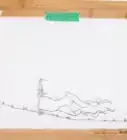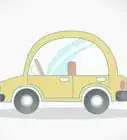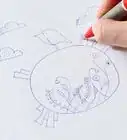X
wikiHow is a “wiki,” similar to Wikipedia, which means that many of our articles are co-written by multiple authors. To create this article, 12 people, some anonymous, worked to edit and improve it over time.
wikiHow marks an article as reader-approved once it receives enough positive feedback. In this case, 92% of readers who voted found the article helpful, earning it our reader-approved status.
This article has been viewed 16,518 times.
Learn more...
If you're a kid who wants to write a graphic novel, don't worry! It's a lot easier than you might think.
Steps
Method 1
Method 1 of 4:
Finding People to Help
-
1Find a writer. This is very important, as if there is no one to write the story in the first place, then you can't turn it into a graphic novel. If you have great ideas and want to write the plot yourself, go for it! If not, you could ask a friend or family member to write it for you.
-
2Find an illustrator. The other job someone will need to do is illustrate the graphic novel. Again, if you want to do this yourself, feel free to, but you may want to find a friend/ family member to draw for you.
Advertisement
Method 2
Method 2 of 4:
Writing The Plot
-
1Make characters. To write the plot, the first thing you have to do is make a list of characters. Some things that are important are: the characters' names, the characters' appearances and the characters' personalities.
-
2Brainstorm ideas. After you have all of the information for the characters, you need to make notes about key parts of the plot, for example the beginning, any important parts in the middle, and the ending. This way, it will be easier for you to put it into graphic novel form later.
-
3Write a script. Finally, you will need to write out the full plot before it is turned into graphic novel form. You could write it as a story or a script, however writing it as a script may be easier, as if you have stage directions and you can clearly see who is saying what it'll be easier to figure out how to draw it later on.
Advertisement
Method 3
Method 3 of 4:
Turning the Story into a Graphic Novel
-
1Make the layout. Now, it's the fun part: making your actual graphic novel! You have two options on how to make the book: you could buy a blank graphic novel with panels already set out, or you could make the graphic novel yourself; however, it is much simpler to buy a blank graphic novel and simply fill in the panels yourself.
-
2Make a front cover. Once you have your empty book with panels set out, you will need to draw a front cover. Make sure the title of the graphic novel is in bold, colourful writing that stands out and the picture shows the main characters doing something that relates to the book. You should also include the names of everyone who helped make the graphic novel (who wrote it and who drew it).
-
3Write a blurb. Before drawing and writing inside the book, you will also need to write a blurb. A blurb is something that is written on the back of the book that tells people about the book without giving too much away. Keep it short and simple, but make sure it also tells you what you're reading about!
-
4Draw the panels. The final part to creating your graphic novel is filling in the panels! You need to draw and colour in each one with as much detail as possible. The pictures should be in order, one after the other just like reading a book. You need to draw a panel for each action so people can see what is happening. Make sure you include speech bubbles or thought bubbles and sound effects to help show what is going on in the story.
Advertisement
Method 4
Method 4 of 4:
Publishing Your Graphic Novel
-
1Show your graphic novel to friends and family. Once you are finished making the graphic novel, you should show it to people! You could take it to school to show your classmates and teachers, and take it to houses of family members so they can read it too.
-
2Sell your graphic novel at school. If you have permission from your parents and headteacher, you could also sell copies of your graphic novel at school. A good price would be about one pound/dollar for each copy.
-
3Sell your graphic novel online. To help make your graphic novel even more well-known, you could ask your parents if you could sell copies online. However, if you are doing this, you need to get your parents or a friend to check for any spelling or grammar mistakes and let them improve the book to make it more suitable to sell to the public. Remember, never do this without permission, as you could get into big trouble!
Advertisement
Community Q&A
-
QuestionWhat's a good drawing style to use?
 PhantasmagoriaCommunity AnswerThat depends on your story and your own abilities. The art style sets the tone of the story in a lot of ways, so consider your genre and how you want the art to reflect that. There is no one drawing style that will suit everything.
PhantasmagoriaCommunity AnswerThat depends on your story and your own abilities. The art style sets the tone of the story in a lot of ways, so consider your genre and how you want the art to reflect that. There is no one drawing style that will suit everything. -
QuestionWhat if I start working on my book, but then I have a different idea? I'm writing a book about girls that form an awesome club, but then I had an idea about a girl getting sucked into the TV.
 A Casual DetectiveCommunity AnswerYou should probably either try to merge the ideas together (the girls make a club and then get sucked into the TV), make one a subtopic of the main story (the girls make a club and one of them has a side conflict of getting sucked in a TV, which could be a continuous conflict or a one-time adventure), or save the one story for after you've finished the first one. Never do two separate stories at once, as you will not get either done.
A Casual DetectiveCommunity AnswerYou should probably either try to merge the ideas together (the girls make a club and then get sucked into the TV), make one a subtopic of the main story (the girls make a club and one of them has a side conflict of getting sucked in a TV, which could be a continuous conflict or a one-time adventure), or save the one story for after you've finished the first one. Never do two separate stories at once, as you will not get either done. -
QuestionWhat if I'm a good writer but a terrible illustrator?
 Chana FordCommunity AnswerYou can still have your work published. Many companies will pair you up with an illustrator if they like your work, or provide illustrations/pictures if you're being featured in a magazine or newspaper. If you want to self-publish, there are many sites that allow you to find and hire an illustrator at reasonable rates.
Chana FordCommunity AnswerYou can still have your work published. Many companies will pair you up with an illustrator if they like your work, or provide illustrations/pictures if you're being featured in a magazine or newspaper. If you want to self-publish, there are many sites that allow you to find and hire an illustrator at reasonable rates.
Advertisement
Warnings
- Never sell anything without permission.⧼thumbs_response⧽
Advertisement
About This Article
Advertisement
